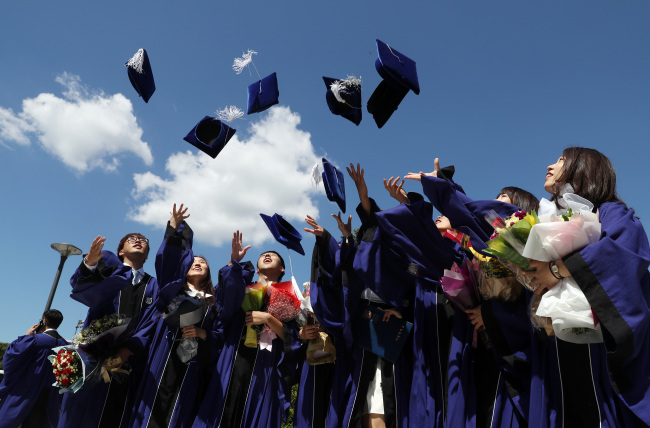The overall number of students in South Korea decreased amid the continuing low birthrate, while the number of students from multicultural families hit a record high this year, government data showed Tuesday.
According to statistics released annually by the Education Ministry in August, the number of students in nationwide preschool, elementary, middle and high schools reached 6.63 million as of April 1, down 2.7 percent from the previous year.

The number of middle school students saw the biggest drop of 8.1 percent, compared to a 1.5 percent decrease for elementary school students and a 2 percent fall for high school students. The number of preschoolers increased by 3.2 percent.
Average class sizes also became smaller.
The number of students per class was 22.4 for elementary schools, 27.4 for middle schools and 29.3 for high schools, statistics showed.
The student-to-teacher ratio also dwindled, with one teacher in charge of 14.6 elementary school students, 13.3 middle school students and 12.9 high school students.
The number of teachers stood at 491,152, a 0.3 percent rise from a year earlier. Their average age was 40.6 years and 70 percent of them were women. Nearly 10 percent of them were not on a regular payroll at schools.
Despite the overall fall in students, the number of those from multicultural backgrounds jumped by 20.2 percent from the year before, standing at 99,186 and accounting for 1.7 percent of the total number of students.
Students of Vietnamese descent made up the biggest portion at 24.2 percent, followed by Chinese at 21.3 percent, Japanese at 13 percent, Filipino at 12.6 and ethnic Korean-Chinese at 12.4 percent. Nearly 80 percent of them were born in Korea.
The number of foreign students also continued to rise, reaching 104,262 in 2016. Among them, 60.5 percent were studying for a degree in Korea. The biggest portion of foreign students were from China, 61.7 percent, followed by Vietnam at 5.5 percent, Mongolia at 3.6 percent, the US at 2.5 percent and Japan at 2.5 percent.
 |
Students celebrate their graduation at Seoul National University in Seoul on Monday. (Yonhap) |
About 3.5 million high school graduates, or 69.8 percent of students, entered universities this year, down 2.7 percent from last year. The university entrance rate has declined gradually from 75.4 percent in 2010.
Nearly 34 percent of high school students in Korea got a job soon after graduation without pursuing higher education.
“Now, there are 120,960 fewer first-year middle school students than first-year high school students. If universities maintain the current admission quota, they will likely have trouble recruiting students,” said an official from the Education Ministry.
The Education Ministry has pushed universities to reduce student admission quotas as part of restructuring efforts amid the falling birthrate.
The fertility rate, the number of babies a woman is expected to have in her lifetime, reached 1.24 this year, showing a 2.8 percent increase from a year earlier. It is still well below the Organization for Economic Cooperation and Development average of 1.68.
The ministry has also offered state funds to universities complying with its recommendation to remove or merge certain majors, create courses in engineering and science and set up career-focused colleges to curb a growing mismatch in the labor market between young people’s career expectations and skills employers look for from job candidates.
The mismatch has been cited as one of the reasons behind the high unemployment rate for young people aged between 15 and 29, which stood at 9.2 percent in July.
By Ock Hyun-ju(
laeticia.ock@heraldcorp.com)









![[Today’s K-pop] Blackpink’s Jennie, Lisa invited to Coachella as solo acts](http://res.heraldm.com/phpwas/restmb_idxmake.php?idx=644&simg=/content/image/2024/11/21/20241121050099_0.jpg)